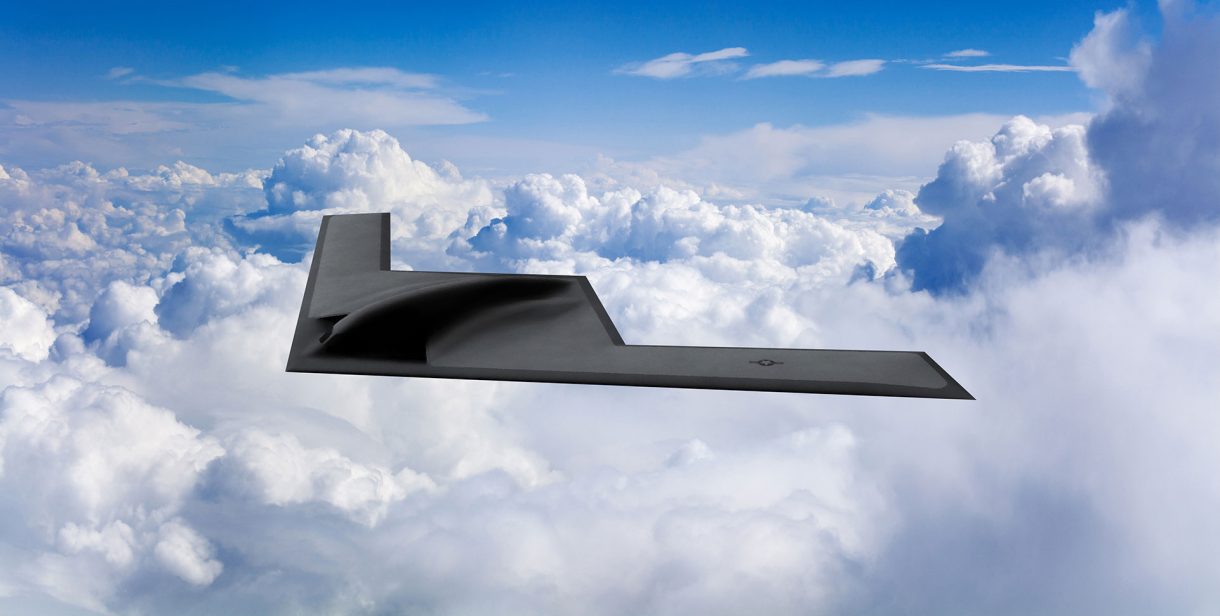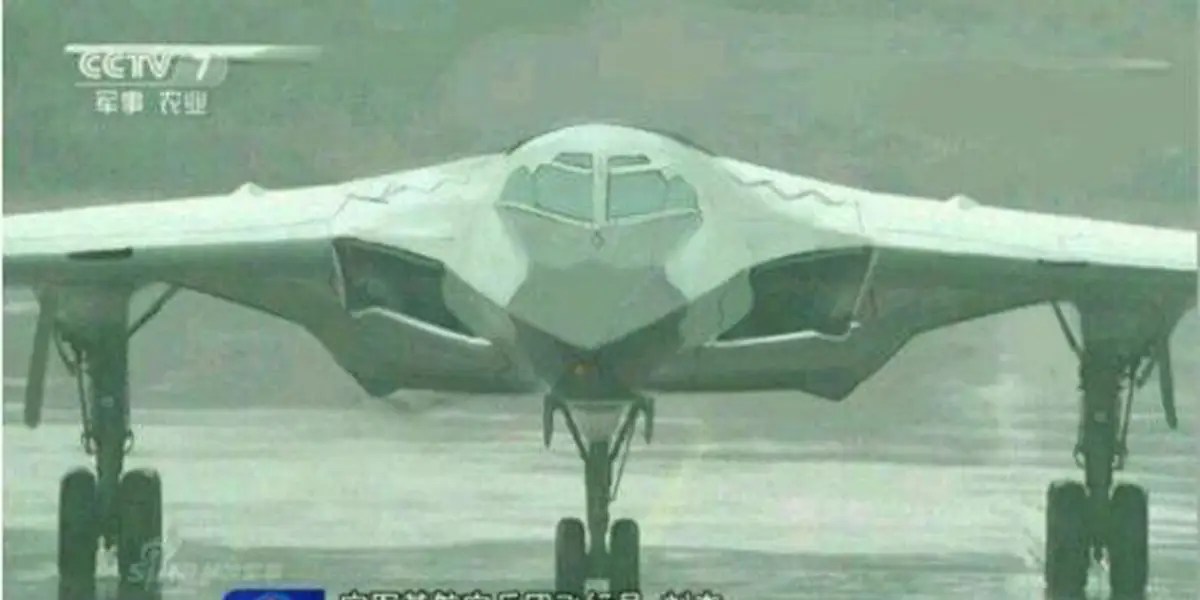The soon-to-be-revealed stealth bomber of the US Air Force, the B-21 Raider’s aim would be to break through China’s impenetrable anti-access/area-denial (A2/AD) shield and begin ground strikes to take out sensitive targets in case of a conflict.
Mid-Air Collision Between US B-17 Bomber & P-63 Kingcobra Likely Caused By A Drone, New Video Appears To Show
This confirms previous analyses by EurAsian Times about the concerted US attempts to overturn its massive logistical disadvantages before an admittedly well-entrenched peer adversary that can inflict horrific losses on the US military.
A report in 19fortyfive pointed to China’s dense and diverse air defense network, a highly advanced air force with fully operational stealth fighters and; long-range anti-land and anti-ship missiles that can keep an entire US naval armada at bay without allowing them to get close.
Not to mention that besides the missiles, the People’s Liberation Army Air Force (PLAAF) and the People’s Liberation Army Navy (PLAN) would also serve as a second line of defense, to destroy and sink anything that comes through the A2/AD bubble.
If it comes to it, all three (the missiles, the air force, and the navy), along with the supposed intercontinental range drones, could mount a collective pushback.
EurAsian Times analyzed this option now available to the Chinese military as a ‘defensive offense’ from the ‘offensive defense’ it employs. Analysts also call the latter China’s ‘active defense’ doctrine.
Here, China is expected to “maintain offensive actions at operational and tactical levels while retaining a defensive posture at the strategic level” (or, in other words ‘tactically offensive’ and ‘strategically defensive’).
Why Is China ‘Impenetrable’?
In the South China Sea, the Chinese have a ‘home advantage’ and missiles that outrange any in the US inventory. The YJ-18 anti-ship cruise missile (range 540 kilometers) and the PL-15 Beyond Visual Range air-to-air missile (300 kilometers) outranges the US’s 240-kilometer range Harpoons and the 161-kilometer AIM 190D, while the DF-21D missile threatens US aircraft carriers.
This erodes the US Navy’s capacity (or payload) advantage. “What could US ships be launching in response? At the ranges we are talking about, nothing,” said former US Navy officer Bryan Clark.
Even China’s other ballistic missiles can pre-emptively take out US and Australian naval assets in the first and second island chains. The DF-16 short-range ballistic missile (SRBM) can reach 1000 kilometers, i.e., the first island chain.
The DF-26 intermedia-range ballistic missile (IRBM) can reach 3,500 kilometers, hitting the most crucial yet farthest US naval base in the western Pacific – Guam. And it is Guam’s vulnerability to the Chinese DF-26 and North Korean Hwasong-12 missiles that motivated the consideration to give Australia the B-21 Raider.
Will The B-21 Cut It For The US?
This B-21 would just “bust through and break down this strategy to destroy critical enemy installations, command and control, and radar centers,” the report said.
The B-21’s large and diverse payload of bombs and missiles is expected to be the JASSM-ER cruise missile, GBU-57 bunker-destroying bomb, and GBU-31 JDAM satellite-guided bomb. It can take off, release ordnance on Chinese targets, and fly back.
Yet it is likely to be tracked by China’s anti-stealth YLC-8E radar or China’s J-20′ Mighty Dragon’, with the stealth fighter’s sophisticated sensor fusion, data processing, and “intelligentized warfare.”
The concept envisages the J-20, various small and big deeply networked assets (drones, early warning aircraft, surface vessels), and anti-stealth radars to trade data.
Possessing maximum ‘situational awareness’ on their own and friendly forces allows optimum tactical decisions. Thus, even a faint, non-track quality detection of the Raider can lead it to being shot down.
Even if the Raider does strike successfully, by no stretch of the imagination, will it permanently cripple China’s ability to recover rapidly, possibly even in under a day, and continue the war?
China can galvanize its entire defense and civilian technology industry to replenish whatever it has lost and continue the fight.
If not through weapons, China can just win doctrinally. Its Active Defense doctrine upholds the “timing” of sudden pre-emptive strikes to “seize the moment” by unleashing a deadlier offensive from which the enemy may not recover.
If China’s H-20 is operational within two years from this December, when the Raider is expected to be unveiled, the former might take out the bases hosting the B-21.
US Military Admits It Does Not Have It Easy
The US Navy’s former Indo-Pacific Command Chief (INDOPACOM) Admiral Harry Harris admitted before the Senate Armed Services Committee in 2018 about Washington’s navy being at a “disadvantage (before) China (with its) ground-based ballistic missile that threaten our basing in the western Pacific.”
His successor, Admiral Phil Davidson, concurred. “These mid-range, anti-ship ballistic missiles are capable of attacking aircraft carriers in the western Pacific,” Harris said about the DF-21D.
Former US Marine Corps Officer Robert Haddick and Visiting Senior Fellow at the Mitchell Institute for Aerospace Studies tells Reuters that it is a “huge gap,” adding, “China’s anti-ship missile capability exceeds those of the United States in terms of range, speed, and sensor performance.”
If weapon performance is insufficient, logistics to sustain a long-drawn conflict is another handicap. The US Marine Corps Assistant Commandant, General Eric Smith, admitted this “dirty little secret” in a Stimson Centre webinar reported by EurAsian Times.
Even wargames conducted by think tanks like the RAND Corporation and the Center for Strategic and International Studies (CSIS) have repeatedly ended in devastating US and Taiwanese defeats.
The US’ logistics are fledgling, and it has no means to sustain a lengthy conflict while China can. “We cannot rely on big, heavy platforms to be loaded on a strategic lift on 30 days’ notice while we shuffle our way into support. Force Design 2030 makes the problem less since it relies on lighter, mobile, smaller forces,” Smith had said.

B-21 – Part Of Multiservice Effort To ‘Turn It Around’
The US military is now in the middle of perfecting new concepts of operations to catch up. The US Marine Corps and US Navy developed the Force Design 2030 Expeditionary Advanced Base of Operations (EABO), Distributed Maritime Operations (DMO), and Ghost Fleet Overlord.
Operating from islands controlled by friendly nations in the South and East China Seas, small, mobile, and hard-to-detect Marine Littoral Combat Regiments can undertake long-range fires on Chinese shipping.
The US Navy’s Unmanned Surface Vessels aim to take the routine load of more prominent combatants allowing them to focus on larger fleet-level operations. Meanwhile, the US Air Force’s Rapid Dragon is another revolutionary idea to complicate the Chinese military’s targeting priorities by “massing” fires on Chinese radars, sensors, and kill chains.
It envisages using workhorse cargo planes and tankers like the C-130J Hercules/MC-130 Commando II and C-17 Globemaster III to release dozens of missiles packed in large ‘pellets’ from their main doors mid-air, like routine airdrops.
Military Not The Only Tool To Win Against China
Even if the US does attack and score some tactical wins, an actual war in far east Asia and the western Pacific will have petrified most nations who will ask both parties to call a truce.
China’s unprecedented military drills around Taiwan after former US Speaker Nancy Pelosi’s visit saw studied silence and calls for de-escalation from every country in the (except Japan). None officially criticized China and threw in its lot with the US.
They may be ideologically opposed to China and its position on Taiwan. But Beijing’s deep economic ties with each of them and the prospect of a conflict wreaking their economies have made them highly opposed to war.
China would know how to leverage economic clout before and during any conflict. East Asian nations can bear down on the US to give up the idea of fighting China. Thus, a merely advanced stealth bomber is no match for the overarching power of diplomacy and sheer brute money power.
Asian countries have long complained about the US not introducing economic investment programs except for Great Power rivalry and weapons deals.
It has grown protectionist, withdrawing from free trade pacts while China knows the game in Asia is money. Its Belt and Road Initiative (BRI) and Regional Comprehensive Economic Partnership (RCEP) are viewed as a no-questions-asked infrastructure, trans-continental transport, investment, and trade opportunity that is free of ideological compulsions (democracy vs. autocracy).
It is a different matter that this view has been catching on in the Middle East and North Africa (MENA) too.
China Doesn’t Underestimate The B-21 Either
China knows the US had traditionally led in stealth technology, and the B-21 is likely to outclass the H-20 and even Russia’s PAK-DA stealth bomber in certain respects.
Beijing holds considerable consternation over the B-21, and Chinese military planners are wary of a massive propaganda win for the US. Even a tactically prominent victory for the B-21 will deflate China’s aura of technologically rivaling the United States.

It would mean the invincible sleek J-20 stealth fighter, unbreakable A2/AD ‘Great Wall,’ impenetrable Integrated Air Defense Network (IADS), and a navy larger than the US could not stop a US bomber from striking the Chinese mainland.
It challenges China’s inspiring narrative for the Global South – a post-War Third World overpopulated nation that metamorphosed into a prosperous, advanced, and powerful state well on its way to unseating the ruling hegemon (the US).
Russia commands neutrality from non-G7 countries since they know Russia has been winning the war. International Relations theory expects non-Great, Regional, and Middle Powers to lean in the direction of swaying winds and see the inevitable, eventual American decline.
But neither does Russia aim to nor is it interested in supplanting the US as the new boss on the block, with rivaling political, economic, technological, and military means. China doesn’t say so, but everybody knows it wants to. China has a lot riding on ensuring a B-21 does not ‘Raid.’
- The author can be reached at satamp@gmail.com
- VIEWS PERSONAL
- Follow EurAsian Times on Google News




